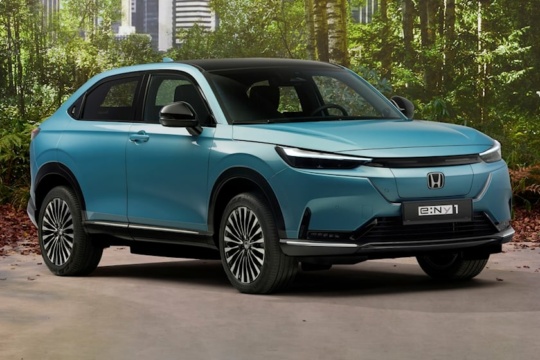Honda’s approach to full electrification has faced scrutiny as it lags behind its European rivals in launching its latest Honda EV, the e:Ny1. In a conversation with Autocar, Honda Motor Europe President Katsuhisa Okuda defended the company’s deliberate pace, citing the practical limitations of fully electric models and emphasizing the importance of infrastructure development. Okuda’s remarks shed light on Honda’s strategy and its commitment to addressing real-world challenges in the transition to electric vehicles.
It is worth mentioning that the Honda e is currently the sole fully electric vehicle on offer in European showrooms, while the newly revealed e:Ny1 is slated to arrive several months later. When compared to other automakers that are already selling electric vehicles in Europe, Honda’s market position in this regard is not as prominent.
This intentional approach aligns with Okuda’s support for Honda’s pace in Europe. He highlighted the parallel between the development of their electric vehicles and the expansion of charging infrastructure, emphasizing their interconnected nature. According to Okuda, both aspects, EV development and infrastructure development, are crucial for ensuring public charging availability and a successful transition to electric mobility.
Honda EV ‘s progress in the United States is even more sluggish, as they currently lack a fully electric model in their lineup. However, there are plans to change this scenario in 2024 with the anticipated arrival of the Prologue, an electric vehicle based on GM’s Ultium platform. If everything goes according to plan, this introduction will mark a significant shift for Honda in the US electric vehicle market.

According to Okuda, Honda is optimistic about the future, envisioning well-developed infrastructure for electric vehicles by 2040 or 2050. At that point, customers will be able to fully embrace EVs. In the meantime, Honda views their plug-in hybrid models as a sensible choice for everyday commuting and longer weekend journeys. Okuda emphasized the realistic and practical nature of these plug-in hybrid vehicles during the interim period.
Honda made several notable debuts in Europe this month, including the CR-V PHEV and ZR-V. However, when asked about the possibility of another plug-in hybrid model, Okuda did not provide confirmation. Meanwhile, the recently unveiled Honda e:Ny1, which shares its body with the European-spec HR-V, features a specially designed EV chassis. With an impressive power output of 201 horsepower and 229 lb-ft of torque, the e:Ny1 is equipped with a lithium-ion battery that offers a maximum range of 256 miles based on the WLTP cycle.




